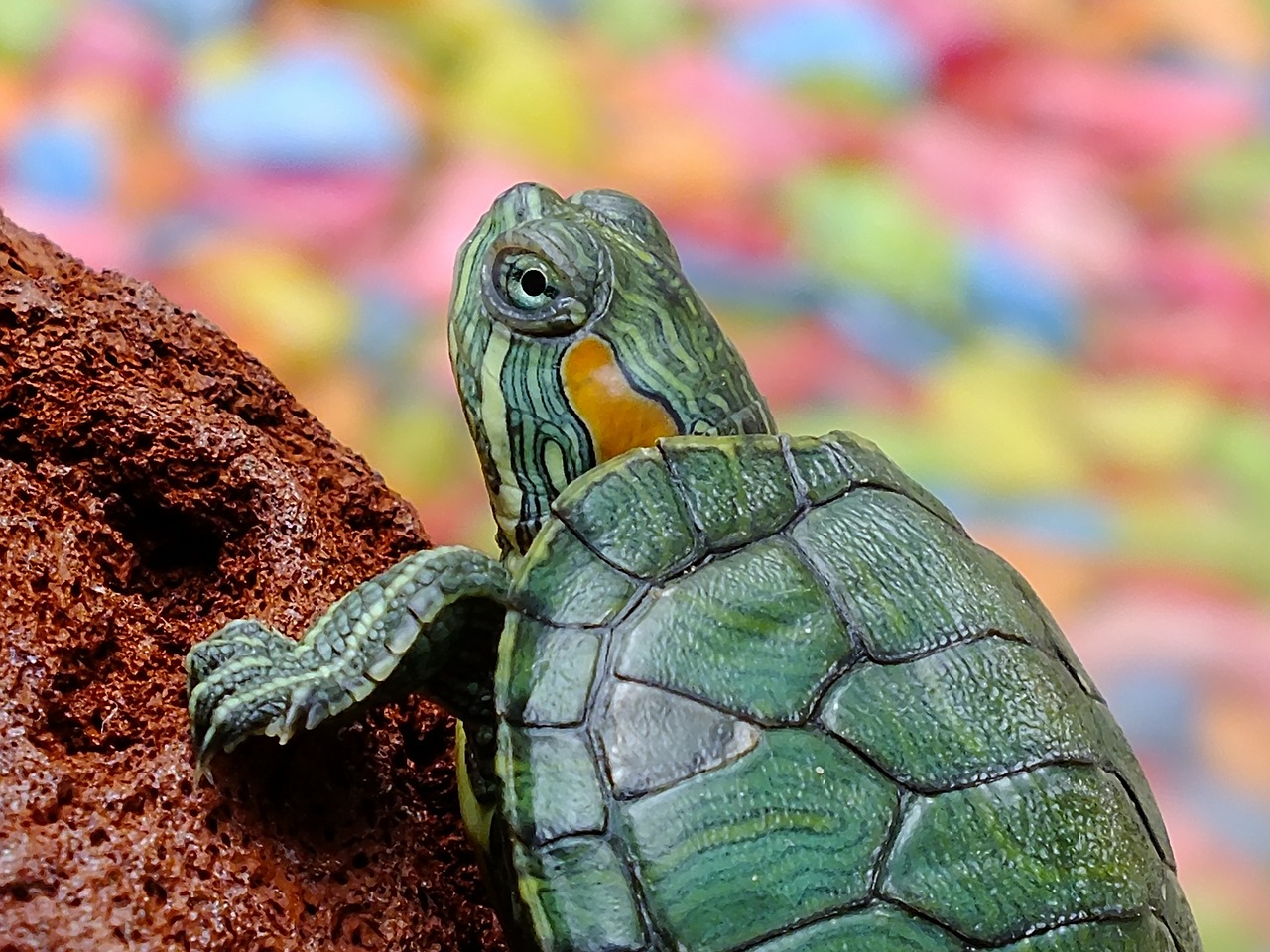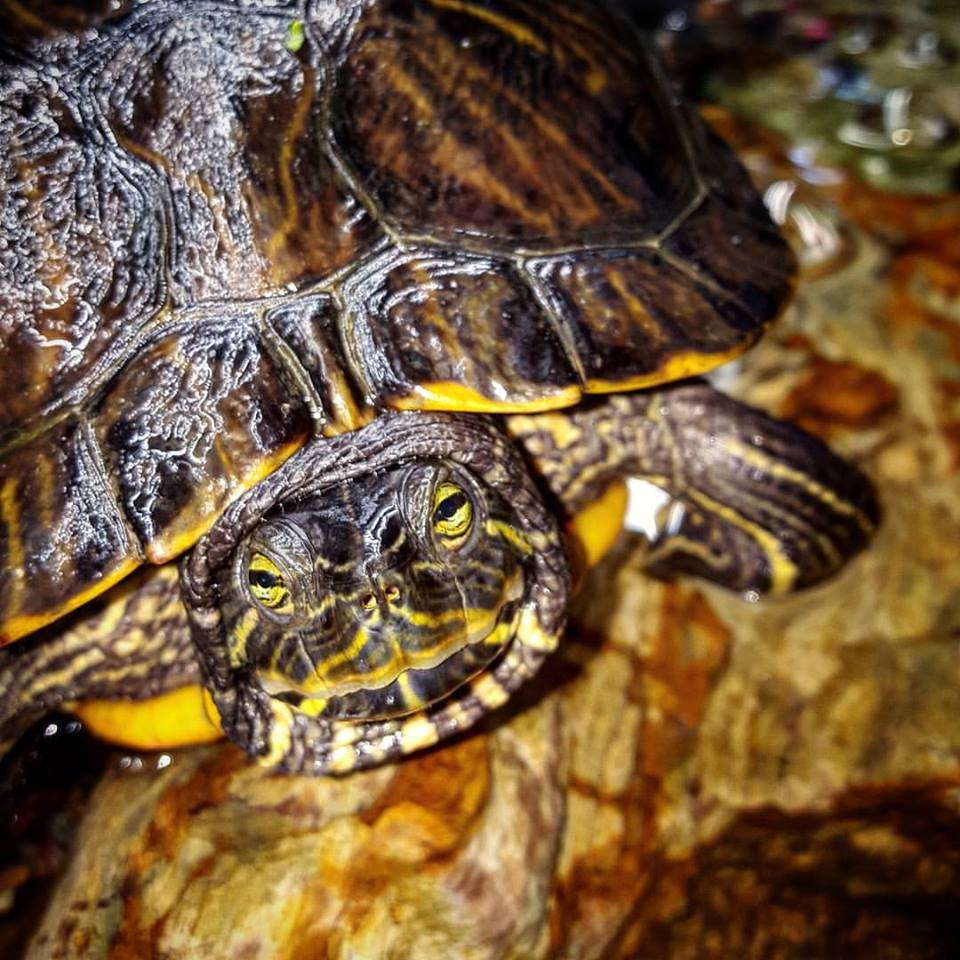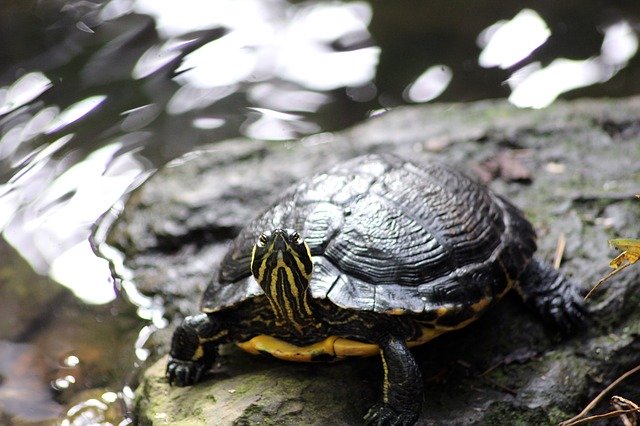Aquatic Turtle Care
Aquatic turtles are among the most popular reptiles kept as pets. There are many aquatic turtle species that make great pets when cared for properly. Although there are many different types of aquatic turtles in North America, the maintenance and care requirements in captivity are all very similar. In the state of Washington we are only able to have turtles that are a minimum size of 4” across the shell. It is important to remember that turtles are long lived animals and many will live more than 20 years. Keeping a turtle is a long-term commitment and needs to be considered before purchasing. Please do not release pet turtles into the wild.
Common Name: Aquatic Turtles
Scientific Name: Graptemys spp., Trachemys spp., Pseudemys spp.+
Distribution: Southeast and Central U.S.A.
Size: 5-12″
Life Span: 6-35+ years
HABITAT
Depending on species, adults will need a minimum of a 40 gallon aquarium per pair of turtles. Provide hiding places and basking areas with the correct heat lamp wattage and UV lighting. Provide filtration with either a hang on tank filter or canister filter such as Zoo Med Turtle Clean Filter.
 HEATING
HEATING
Daytime Terrarium Air Temperature: 75-80° F .
Basking Spot: 85-90° F
Splash-proof Halogen Lamp is the safest and best choice for providing basking heat to your turtles. Water Temperature: 78-80°F .
A quality aquarium heater will be needed to maintain water temperatures between 75-80°F. Position basking areas in places where turtles can exit the water, using decorative rocks or a Turtle Dock.
LIGHTING
UVB Lighting is essential for aquatic turtles to process calcium in captivity. Lighting should be provided for 8-10 hours per day. Without UVB lighting turtles will develop serious health problems such as Metabolic Bone Disease (MBD) or infected eyes. ReptiSun® 5.0 UVB Linear fluorescent or Compact Fluorescent Lamps are a great choice for providing UVB. The halogen bulbs are a great choice to provide both UVB and basking heat, however care must be taken to keep the lamp away from water.
SUBSTRATES
Large gravel or river rocks are the best for aquatic turtles. Do not use too small of substrate as these can be accidentally ingested and may cause impaction.
 NUTRITION
NUTRITION
Most aquatic turtles are omnivores that change their diet throughout their lives. Aquatic Turtle Foods have been formulated to offer balanced nutrition throughout the changing life stages of your turtle. Turtle Sticks are a floating food that is formulated with both fish and plant matter to simulate the natural diet of aquatic turtles. Provide a cuttlebone that will help maintain proper calcium levels and the turtle’s beak.

